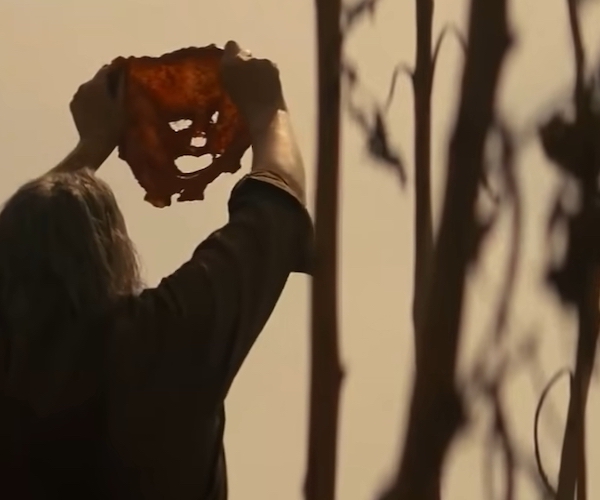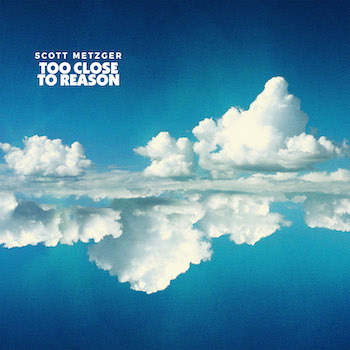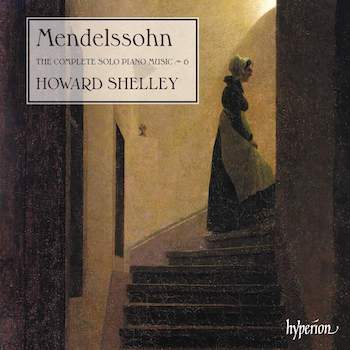March Short Fuses – Materia Critica
Jazz
This is a good album — maybe too unpolished for that romantic candle-lit dinner, but it’s a fine study in how to construct mainstream ballad solos with taste and individuality.
 Saxophonist Steve Slagle is in his 70s now, and there’s maturity and wisdom in his playing. With each phrase, he knows where he wants to go, what path will get him there, and how it sets up the next phrase. There’s no hesitancy, no noodling, and no throwing everything against the wall to see if something sticks in the name of “virtuosity.” With Ballads: Into the Heart of It (Panorama), Slagle walks in confidently where there’s no place to hide.
Saxophonist Steve Slagle is in his 70s now, and there’s maturity and wisdom in his playing. With each phrase, he knows where he wants to go, what path will get him there, and how it sets up the next phrase. There’s no hesitancy, no noodling, and no throwing everything against the wall to see if something sticks in the name of “virtuosity.” With Ballads: Into the Heart of It (Panorama), Slagle walks in confidently where there’s no place to hide.
Slagle’s tone is starting to show his age, however. Slagle is always precise, but there’s some blurry wobble where the controlled vibrato used to be. There’s less of the tartness that made him stand out in a big band, and that’s not necessarily a bad thing for a ballad album. But he doesn’t have as much of the pleading, urgent sound that he once had (hear, for example, his commanding presence on the title track to Carla Bley’s Heavy Heart).
Slagle is joined here by Bruce Barth and Richard Sussman on keyboards, Ugonna Okegwo on bass, Jason Tiemann on drums, and guest trumpeter Randy Brecker on three tracks. All are ego-free studio pros, and no one is pushing any envelopes here. I would have liked to hear some of Slagle’s excellent flute playing to add some sonic variety, especially to “My One and Only Love,” which has an Afro-Caribbean feel.
The album opens boldly with one of the greatest ballads ever from one of the greatest ballad players ever on one of the greatest jazz albums ever: Miles Davis’s “Blue in Green” from Kind of Blue. The ringing electric piano and synthesizer tones give the piece a modern update, and Slagle shows no intimidation. Another standard is Thelonious Monk’s “Reflections,” given a lush recording that brings out the richness of Brecker’s sound. They don’t emphasize the Monkish rhythms and intervals as much as remind us of this song’s beautiful chord changes.
“Si, See” has Slagle on soprano. His percussive attack and cleanly snipped-off notes at times recall Steve Lacy, although Slagle has a way of ending a phrase by sliding down into something smooth in a way uniquely his own. On “The Four Margarets,” Slagle’s soprano has more of clarinet-like tone with an approach that is closer to Grover Washington Jr. than Lacy. On the final note, Slagle hits an octave dead perfect. Do not attempt this on soprano unless you’re a 50-year pro like Slagle.
A ballad album succeeds or fails on the soloist’s tone and ability to create a mood. At times, such as the start of “If You Could See Me Now,” Slagle has fluid Charlie Parker-like lines that slide gracefully over the changes; at other times, like on “Kiss Lonely Goodbye,” Slagle’s intonation falters, and those high split notes sound more clumsy than dramatic.
This is a good album — maybe too unpolished for that romantic candle-lit dinner, but it’s a fine study in how to construct mainstream ballad solos with taste and individuality.
— Allen Michie
Film
It is time for the moth-eaten Leatherface to set down his chainsaw and retire.

A scene from the latest version of Texas Chainsaw Massacre.
Quite a few of us have, at some time or another, entertained the desire to remove some of life’s irritants, but we don’t act on these urges. Of course, Leatherface does, and he slaughters another crew of unsuspecting visitors in Texas Chainsaw Massacre, the ninth entry in the popular slasher series. At only 81 minutes, this sequel suggests that arthritis has set in. It is time for the weary monster to set down his chainsaw and retire. (He could even pick up some new hobbies. How about wood carving?)
The unintentionally hilarious plot follows Lila (Elsie Fisher, who deserves better than this disaster) as she heads to Harlow, the notorious home of the clan of cannibals, with her influencer sister Melody (Sarah Yarkin) and her chef/foodie influencer buddy Dante (Jacob Latimore). Melody and Dante have bought up some property in the hopes of transforming it into a hipster mecca. The locals do not take too kindly to this. And who can blame them, considering how awful (with the exception of Lila) these folks are? They barge into their new home only to discover that the previous resident, a confused elderly woman, doesn’t want to leave. In the hubbub of trying to remove her, she passes away, and that enrages her behemoth son — Leatherface. He doesn’t take too kindly to these brats accidentally killing his mama, so he cuts off her face, places it on his, and goes on a murder spree.
This time around Leatherface is given a personal motive for his rampage; he usually is bullied or forced into murder by his cruel family. At the same time, it’s strange that Leatherface is the only killer around — he was never the primary villain in the Texas Chainsaw franchise. The arrangement was that he was one of the killers in a family of cannibalistic killers. Unlike Halloween‘s hulking Michael Myers, who terrorizes without a care in the world, Leatherface has not always been 100 percent on board the murder train. In the second film, for instance, he falls for the unfortunate victim and even tries to save her. He treats his victims in the first film as a nuisance; he doesn’t relish taking their lives — he’s just doing as his family has trained him. There is a liberal message here: if Leatherface had been born into a different family, there would have been no need for him to find happiness buzz-sawing through flesh.
This point becomes particularly poignant when Sally Hardesty (Olwen Fouere), the sole survivor of the 1974 film, returns to Harlow to finally take out Leatherface. Yes, Sally would want revenge, but why does she only seek out Leatherface? What about the rest of his inhuman family? They terrorized her just as much. It makes sense in the 2018 film Halloween that Laurie (Jamie Lee Curtis) would specifically seek out Michael Myers — her beef is solely with him. But to have Sally chase down Leatherface alone is a cheap way to connect this film to the original.
The original Texas Chain Saw Massacre and its follow-ups have always put mayhem at the service of social satire. The 1974 effort critiqued Americans’ apathetic attitude to the violence around them, specifically the horrors in Vietnam. The new film also attempts to target cultural gaucheries, but the lampooning is strictly childish. A busload of influencers show up in Harlow — supposedly to gape at the hipster paradise. Leatherface boards their vehicle. They don’t run away or even try to defend themselves — they livestream him. It is oddly satisfying to watch insufferable Gen Z’ers/milliennials get hacked to death, but there’s no satiric zing in swatting flies.
— Sarah Osman
Rock
This solo album presents guitarist Scott Metzger pushing his musical pursuits in new directions.
 Scott Metzger’s debut solo album, Too Close to Reason, presents a whole new side to this inventive guitarist who many of us have come to know through his work with Joe Russo’s Almost Dead. This all-instrumental, 12-track, mostly acoustic excursion boils down Metzger’s style to its very essence: lots of evolving ideas within a song and a knack for stitching together seemingly disparate musical themes. Yet it also presents him pushing his musical pursuits in new directions. Metzger has proven that his improvisational chops can sustain the energy of the lengthiest of jams. This project highlights just how effective he can be coming up with succinct, imaginatively plotted arrangements.
Scott Metzger’s debut solo album, Too Close to Reason, presents a whole new side to this inventive guitarist who many of us have come to know through his work with Joe Russo’s Almost Dead. This all-instrumental, 12-track, mostly acoustic excursion boils down Metzger’s style to its very essence: lots of evolving ideas within a song and a knack for stitching together seemingly disparate musical themes. Yet it also presents him pushing his musical pursuits in new directions. Metzger has proven that his improvisational chops can sustain the energy of the lengthiest of jams. This project highlights just how effective he can be coming up with succinct, imaginatively plotted arrangements.
Too Close to Reason opens with the ambient wash of “Appropriate Wattage” before settling into the spry “Don’t Be a Stranger,” an apt title for a song that fuses an array of contrasting musical influences into a smartly arranged number. Metzger works magic in “Talk Like That,” conjuring up a bluesy noir, and he makes the Spanish flourish of “Café Hidalgo” pop through a performance filled with an urgent and frenetic energy.
The album’s centerpiece is the two-part “Dream Room” sequence. The first part is drone and jittery picking, full of starts and stops. The track is not quite as fractured as the jagged composition “Damage,” which Metzger plays earlier on the record, but it is not as fluid as what the album typically features. That bumpy section resolves into the warm and invitingly harmonizing guitar line of “Dream Room (Part 2).” This combo suggests that Metzger puts equal value on probing the unfamiliar as well as the reassuring.
Violinist Katie Jacoby and Metzger, who are engaged, team up for the soothing ballad “Only Child.” The guitarist brings the project home with “At Your Service,” which flaunts a flash of electric, mirroring the sculpted approach to the opening track. But this time there is a greater sense of having evolved a pleasing form out of initial chaos.
Too Close to Reason arrives March 5 on Royal Potato Family records. Metzger is scheduled to perform March 30 at Club Passim in Cambridge.
— Scott McLennan
Books
 When Ukrainians are asked (by CNN and others) about how they are dealing with the Russian invasion, many answer that for the past eight years the country has already been fighting Putin. The point is quickly passed over because few in the West paid much attention to the conflict, though Russia’s desire to absorb parts of eastern Ukraine (with reportedly 14,000 casualties) made Putin’s imperialistic intentions clear. We ignored them at our peril. Since 2014, Russian separatists, with military support from Moscow, have been waging an internecine war with the locals. Towns and cities are taken, lost, and retaken by the opposing sides. The breakdown of life and territory has become terrifyingly routine. As Putin approaches Kyiv with the intention of leveling the city, the pitiless nature of combat in eastern Ukraine — and what it has done to its exhausted inhabitants — has become prophetic.
When Ukrainians are asked (by CNN and others) about how they are dealing with the Russian invasion, many answer that for the past eight years the country has already been fighting Putin. The point is quickly passed over because few in the West paid much attention to the conflict, though Russia’s desire to absorb parts of eastern Ukraine (with reportedly 14,000 casualties) made Putin’s imperialistic intentions clear. We ignored them at our peril. Since 2014, Russian separatists, with military support from Moscow, have been waging an internecine war with the locals. Towns and cities are taken, lost, and retaken by the opposing sides. The breakdown of life and territory has become terrifyingly routine. As Putin approaches Kyiv with the intention of leveling the city, the pitiless nature of combat in eastern Ukraine — and what it has done to its exhausted inhabitants — has become prophetic.
Thus the distinct value at this time of Serhiy Zhadan’s compelling novel The Orphanage, initially published in 2017 and now available in a lively translation into English from the Ukrainian by Reilly Costigan-Humes and Isaac Stackhouse Wheeler (Yale University Press, 324 pages). Zhadan is a leading Ukrainian writer, a poet, novelist, and essayist. (Now 47, he lives in the city of Kharkiv, which is currently under heavy Russian bombardment.) The Orphanage is a powerful, if episodic, tour through the fog of war somewhere in the Dunbas region. Though mud and slush might be more appropriate — the protagonist slogs by foot through as much sludge as the creatures in Samuel Beckett’s How It Is. Pasha is a Ukrainian language teacher in a high school: nebbishy and politically neutral, he is unfit for combat because of an injured hand and a heart condition. His father asks him to venture out of a settlement called “the Station,” near an unnamed metropolis that has become a reinvigorated war zone. Pasha is charged with bringing his teenage nephew, Sasha, back from a school in the now besieged city. For some reason the school is called an “orphanage,” though in the narrative the word grows to suggest the region’s traumatic state of disconnection — everyone is an orphan.
Or maybe the point is that everyone in this region is a refugee. Pasha makes his way through a hellscape of war-torn confusion and anarchy. Sometimes out of choice, sometimes not, he joins up with groups of desperate people who are looking for safety in decimated buildings and emptied-out apartment complexes: “Half of them have no homes. No relatives. So they’re wandering along the edge of town, with no chance of escaping. They’re walking in circles, walking around their city. And I’m walking with them, for some reason.” Amid this chaos Pasha remains single-minded and detached, though he can be surprisingly resourceful if the situation calls for it, particularly when it comes to dealing with enemy forces. Unlike the nomads around him, Pasha is driven by a deep hunger to return to his routine at home.
Mornings filled with domestic tasks, a job you have gotten used to like its one of your outfits — it’s not too constricting, it doesn’t get in the way, wear it while you can. Quiet evenings, dark nights. Actually there’s so much joy, so much warmth in all of this. You had to wind up here, in the middle of hell, to feel how much you had and how much you’ve lost. Just have to get home as quickly as possible, finally step off the circles of others’ misfortune.”
Zhadan never snaps his protagonist out of this fear of commitment, but neither can he “step off the circles of others’ misfortune.” The sheer haphazardness of survival, compounded by the inhumanity he sees around him, convinces Pasha that there’s “no pity, no pity for anyone.” Yet his dedication to protecting his nephew, as well as his earnest attempts to help a dying soldier, suggests otherwise. The book’s language ranges from the naturalistic to the poetic and it is steeped in this duality, often taking the form of Dostoyeviskan flip-flops, beauty morphing into ugliness or vice versa. The ending offers some flickers of solace, but overall this is a forceful vision of absurd waste, a look at people who have been hollowed-out by war. For those who want a glimpse of what life will be like in Ukraine for years to come, The Orphanage offers a frightening glimpse.
[Note: As of this writing, Yale University Press says that Zhadan remains in Kharkiv. He is not planning to leave and is posting on Twitter (reporting from the streets and interviewing people). His most recent post is from a couple of days ago, before Russia doubled down on its attack of that city.]
— Bill Marx
Classical Music
A thoughtful, beautifully played, and well-recorded culmination to this worthy cycle.
 Howard Shelley’s survey of the complete piano music of Felix Mendelssohn reaches its end with this sixth installment, a mix of pieces somewhat familiar and somewhat obscure.
Howard Shelley’s survey of the complete piano music of Felix Mendelssohn reaches its end with this sixth installment, a mix of pieces somewhat familiar and somewhat obscure.
The biggest single selection is the Piano Sonata in B-flat, one of only two entries in the genre Mendelssohn wrote. The Sonata’s obscurity owes, in part, to its fiendish difficulty, though Shelley’s sweeping, colorful execution of the part sounds effortless. From the taut, galloping opening rhythms through the impish Scherzo, songful Andante, and dancing finale, his is an altogether engaging reading, both nicely weighted — Shelley’s playing is perfectly fleet and balanced but always full-bodied — and thoughtfully shaped.
A similar depth of feeling is evident in the pianist’s readings of Books 7 and 8 of the Songs without Words. Shelley capably mines the music’s wistfulness — particularly in the first and fourth movements of each collection — without ever devolving into sentimental excess. And he delivers its playful side (see Book 7’s No. 6 or Book 8’s No. 3) with perfectly judged flair.
The rest of the (Hyperion) album consists of often lovely minutiae.
There’s Shelley’s songful account of the tempestuous op. 117 Albumblatt, a beautifully directed take on the op. 118 Capriccio, and an elfin Perpetuum mobile (op. 119). He also has evident fun with the E-minor Prelude and Fugue, drawing out the vigorous edge of the former and making intense work of the latter (especially its closing bars).
Throughout, there’s a winning clarity and direction to Shelley’s performances and this serves to highlight the excellence of the disc’s shortest fare: the A-minor Lied (itself a reworking of the second movement from the Song Without Words Book 1), two Musical Sketches, and stout Reiterlied.
Taken together, then, we’ve got a thoughtful, beautifully played, and well-recorded culmination to this worthy cycle.
The onus rests here on the Carnegie Melon Wind Ensemble to make, as it were, lemonade out of a musical lemon.
 Richard Strauss is something of a conundrum. On the one hand, he turned out music of exceptional power and drama — think Tod und Verklärung or Elektra. At the same time, the pen that gave us Salome also wrote the nauseating Japanese Festival Music.
Richard Strauss is something of a conundrum. On the one hand, he turned out music of exceptional power and drama — think Tod und Verklärung or Elektra. At the same time, the pen that gave us Salome also wrote the nauseating Japanese Festival Music.
There’s also the matter of style. For part of his life, Strauss was on the cutting edge of the avant-garde. But much of the last half of his career reflects a passé embrace of Mozart and Couperin.
Granted, most of Strauss’s output falls between those poles. The two releases on this (Reference Recordings) album — the Sonatina No. 2 (The Happy Workshop) and the Serenade — certainly do. Yet they don’t paint the most flattering picture of a career trajectory. The 1882 Serenade is a masterpiece of melodic invention and concision. Finished in 1945, The Happy Workshop, spins its wheels for long stretches.
Given that reality, the onus rests here on the Carnegie Melon Wind Ensemble to make, as it were, lemonade out of a musical lemon.
They partially succeed.
In the middle two (of Workshop’s four) movements, there’s a welcome sense of character and spirit to the group’s playing. The solo clarinet runs in the Andantino sound wonderfully fresh and the Cantabile episodes in the Minuet are beautifully blended.
Alas, the outer movements tend to be choppy of phrase, raw of tone, and sometimes sluggish. Intonation’s periodically an issue, too, though the playing settles well in the finale’s fugal sequences.
Things are generally better in the Serenade, which, despite some jumbled polyphonic moments, offers fine dynamic shadings and flowing lyrical passagework.
— Jonathan Blumhofer
Commentary

Quit it! No more wolf whistling at performances.
I had expensive tickets for good seats to see Les Misérables at the elegant concert hall in town. Most had dressed up, even though this was on a university campus. The actress had just finished the lovely aria “I Dream a Dream,” and there was hardly a dry eye in the house. Then there it was —some yahoo sitting behind me stuck his two grubby fingers into the sides of his piehole and let loose a blood-curdling screech like he was a 15-year-old at a Kiss concert in a hockey stadium.
Just this week I heard Pat Metheny and his Side-Eye trio. We all paid premium prices to hear musicians of this caliber in a small club setting. All it took was for one person — just one — to ruin the entire vibe and cause physical pain (no exaggeration) to those sitting around him. If he wanted Metheny’s attention, he could have just yelled a “woohoo” or something — he wasn’t more than 100 feet away. Instead, it had to be something the same volume as a car alarm after every song. Often after every solo.
Producers: Please edit out these whistles from live records. If you ever get the opportunity to remaster any of the Norman Granz Live at the Philharmonic classic jazz jam sessions on Verve, please edit out that idiot who must have gone to every concert and blew his guts out while everyone else applauded. If it’s a live album of Insane Clown Posse or whatever, then do whatever you want. But for everything else, please spare us the human fire truck sirens in the middle of our music.
Managers and ushers: After one warning, out the whistlers go with no refunds. Do you allow people to smoke in the theater? If not, then why not?
Musicians: If you can ask for no photography, no recording, and no cell phone use, then you can also ask for no whistling. If the reason why you don’t allow cell phones is because the little square of light is going to bother other people, then why don’t you also ask them to not stab daggers into the eardrums of other people (at the very time when you need those eardrums for your music to do its magic)?
YOU: With the rare exception if you are at an outdoor rock concert with no one within reasonable distance of you, then NEVER give a two-finger whistle at a music or theater event. If it’s an exceptional performance, then audiences have a tool for that: the standing ovation. The two-fingered whistle adds nothing for the artist and shows no greater level of appreciation than applause, but it’s aggressively rude to the people sitting around you.
Just because you can do something doesn’t mean you should. I could bring an air horn with me to the next concert and blow it off right next to you, but I won’t. So let me say it now, on behalf of everyone else in the indoor venue, and get it over with: wow we’re very impressed that’s so amazing you can do that gee we wish we could do that too it’s great that you really love the music so much you’re so cool we wish we could be as cool as you. There. Happy? Now STOP IT.
— Allen Michie

Have you seen this man? Manet’s Chez Tortoni (1875), one of the paintings stolen from the Isabella Stewart Gardner Museum in 1990.
The small-timers we occasionally hear about did not have the vision or imagination to carry out the Isabella Stewart Gardner Museum heist by themselves.
March 18th will mark the 32nd anniversary of the Isabella Stewart Gardner Museum’s audacious heist. There have been no real clues or convincing suspects for over three decades. Conservatively, the value of the artwork stolen is well north of half a billion dollars. In 1990, through stupidity, incompetence, and lack of law enforcement coordination, the investigation of one of the greatest museum robberies ever was bungled by the FBI, the Massachusetts State Police, and the Boston Police Department. Over the years, a cottage industry about the identity of the crooks has developed: articles and books, as well as films, both features and documentaries. There continues to be speculation about the who, what, why, when, and where of this audacious crime. No solutions have been forthcoming — even with a $10 million reward and, because of a statute of limitations, a diminished fear of indictment. Nothing has happened to solve the case. Not one piece of the stolen Gardner art has been recovered.
Every so often, another nugget pops up, usually about a low-level hood having said something, maybe flunking a polygraph test or showing something that might relate to the theft. In February, it was reported that a murder in Lynn, MA, of a small-time hood was somehow connected to the Gardner Heist. Shortly before his demise, the victim is said to have boasted that he had some of the stolen paintings. Information of that sort had been passed along to the FBI in 2010. A tipster said that the victim had acknowledged that the paintings were hidden inside his apartment on Broad Street in Lynn. A search by FBI then found nothing.
Several months ago, a questionable jeweler, perhaps an underworld fence, whose business was located in Boston’s Jewelers’ Building, said that soon after the robbery he had been shown the stolen Napoleonic gold eagle by one of the individuals designated by the FBI as a person of interest. Unfortunately, that conversation had not been reported to the FBI at the time. The person of interest was violently murdered in 1991.
Last year, there was a well-researched four-part Netflix documentary that seemed to connect a lot of the dots. The links suggested relationships between some mutual acquaintances that included minor thieves, con men, and small-time career criminals. But the series ended up asking more questions than it answered. Among the biggest begged questions: why did the heist happen and for whom? Nothing has ever been turned up, so who profited? Who has the artwork?
The small-timers we occasionally hear about did not have the vision or imagination to carry out this crime by themselves. Well after three decades, the baffling mystery remains. Isn’t it way past time to look in other directions? Who was the mastermind behind this spectacular heist? Dr. Fu Manchu? The Spider Woman ? Maybe Professor James Moriarty?
— Mark Favermann
Tagged: Allen Michie, Ballads: Into the Heart of It, Bill-Marx, Carnegie Melon Wind Ensemble, Jonathan Blumhofer, Leatherface, Literature for a Changing PlanetLiterature for a Changing Planet, Panorama, Reference Recordings, Sarah Osman, Scott McLennan, Scott Metzger, Serhiy Zhadan, Steve Slagle, Texas Chainsaw Massacre, The Orphanage

Here’s just one example of beautiful, reflective music absolutely ruined by a two-fingered, zero-brained whistling sociopath. Caetano Velo’s otherwise gorgeous album “Live in Bahai” is polluted throughout by philistine whistlers with no sense of common decency to those sitting within 50 yards of them, but this lovely song in particular is trashed:
https://www.youtube.com/watch?v=JAkVuQZHNOo
Artists, please, please, NEVER announce to your audience in advance that you’re making a live recording, especially if you’re indoors. It’s guaranteed that some asshole (and it only takes one) will think that this is his or her one chance for immortality to get themselves preserved forever on the record by slashing an audio razor through your careful performance.